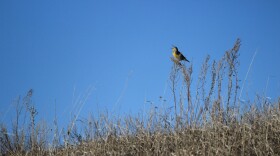It is time to look skyward at night again. Some of you may have been noticing some meteors recently. The Leonids Meteor Shower began on November 6th and will run through the 30th. The shower will peak on the night of November 17th and early morning hours of the 18th with perhaps 15 meteors or so per hour. A nearly full moon, however, will make only the brightest of meteors clearly visible.
We also have a partial lunar eclipse coming up on the early morning hours of Friday November 19th. There are from 2 to perhaps 5 total or partial eclipses each year, with the total eclipses being less frequent than the partial eclipses. If the sky is clear, we should be able to see the entire eclipse. I checked timeanddate.com for the timing of the eclipse. The penumbral eclipse will begin at 12:02 am Central Standard Time. The partial eclipse will begin at 1:19 am Central Standard Time, with the greatest eclipse occurring at 3:03 am Central Standard Time. That will be followed by the end of the partial eclipse and then penumbral eclipse at 4:47 and 6:03 am Central Standard Time respectively. From start to finish, that is about six hours of viewing time. So, we should be able to see at least see a part or parts of the eclipse depending upon whether the sky is clear or not.
We now know, of course, that lunar eclipses happen when the earth passes between the sun and the moon. But can you imagine what earlier civilizations would have thought of eclipses (both lunar and solar)! Undoubtedly something very strange was going on up there. Several early cultures were of the belief that something was swallowing the moon or sun, such as a demon, jaguar, or wolf. One Norse myth involved two celestial wolves, one chasing the sun and one chasing the moon. If the wolves ever caught the sun or moon, it would mark the end of the world. A lunar eclipse occurred when the wolf came dangerously close to the moon. The blood-red color of the moon during a lunar eclipse indicated bloodshed. It is often referred to as a “blood moon.” We now know that it is not due to bloodshed. It is the result of greater amounts of the red portion of the light spectrum being reflected compared to the other colors.
So consider taking the time to watch these celestial shows. If the sky is clear, there will be something interesting to see.




